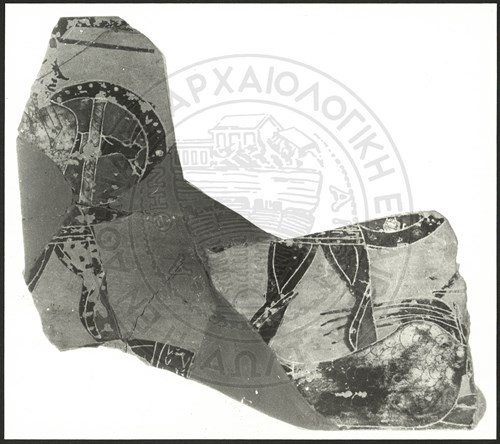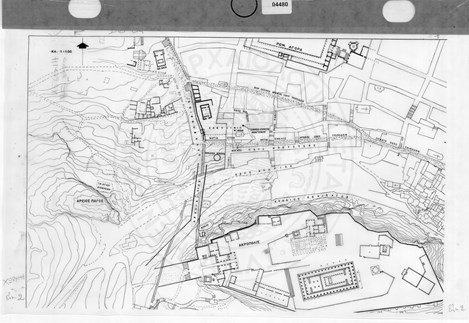First day | 14th of Boedromion | Prothymata
The celebration of the Greater Mysteries began on the 14th of Boedromion with the official conveyance of the sacred objects of the cult from Eleusis to Athens. The sacred objects remained for most of the year in the Anaktoron at the heart of the Telesterion in the sanctuary of Demeter. The uninitiated were not allowed to view them, so the priests placed them in cysts decorated with red ribbons. The cysts were cylindrical containers with fitted lids. The exact number of containers required to transport the sacred objects is not known, but it seems that there were several.
The procession, which would take the sacred objects to the City Eleusinion at the foot of the Acropolis, formed outside the sanctuary. First came the preliminary sacrifices (prothymata). Tradition required that the priests and priestesses carry the cysts on foot, but later the priestesses could use carriages for at least part of the route. Somewhere between the Rheitoi bridge and the sanctuary of Echo, where the traditional border between Eleusis and Athens was located, the procession encountered an armed detachment of Athenian ephebes who accompanied it to the city. In the Roman period, the procession underwent some changes. The ephebes came to Eleusis on the 13th of Boedromion and accompanied the sacred objects of Demeter from the beginning of the procession. The ephebes traditionally wore black chlamys in memory of an old murder. Kopreas was a herald of Eurystheus and delivered the news whenever Heracles completed one of his labours. After the death of the mythical hero, his descendants fled to Athens, but Eurystheus sent his favourite herald to demand their expulsion. Kopreas spoke with such arrogance and audacity that the Athenians killed him in a fit of rage, although he was an inviolable person as a herald. Herodes Atticus believed that the Athenians had atoned for the great sin and offered the ephebes white chlamys.

Pyre Β and Γ. Double-sided black-figure panels [warriors], Konstantina Kokkou-Vyridi, photograph, Εν Αθήναις Αρχαιολογική Εταιρεία © Η εν Αθήναις Αρχαιολογική Εταιρεία
The procession stopped, once again, in Hiera Syke, a suburb of Athens belonging to the ancient deme Laciadae. According to mythological tradition, Demeter stopped here during her search for Persephone and received the hospitality of the local hero Phytalus. In return for his hospitality, the goddess of agriculture gave him as a present the fig tree. The Athenians welcomed the sacred objects and accompanied them to the city. Finally, the procession arrived at the City Eleusinion and deposited the cysts in the sanctuary. Meanwhile, the Phaidentes ascended to the Acropolis to announce the arrival of Demeter to the priestess of Athena.

Topographic plan of the area of Eleusinion - Areopagus, Alcestis Choremi-Spetsieri, engraving, Εν Αθήναις Αρχαιολογική Εταιρεία © Η εν Αθήναις Αρχαιολογική Εταιρεία






